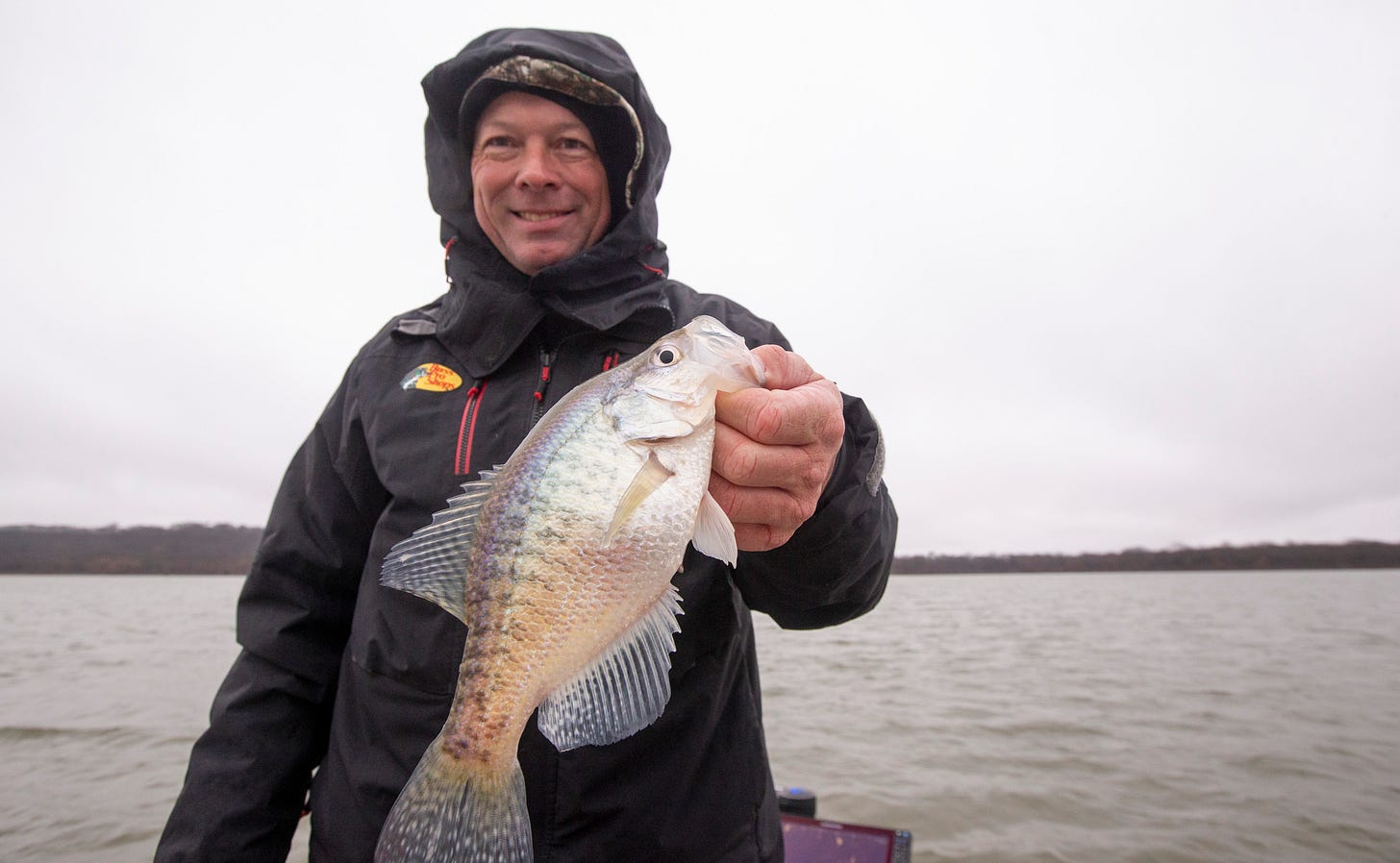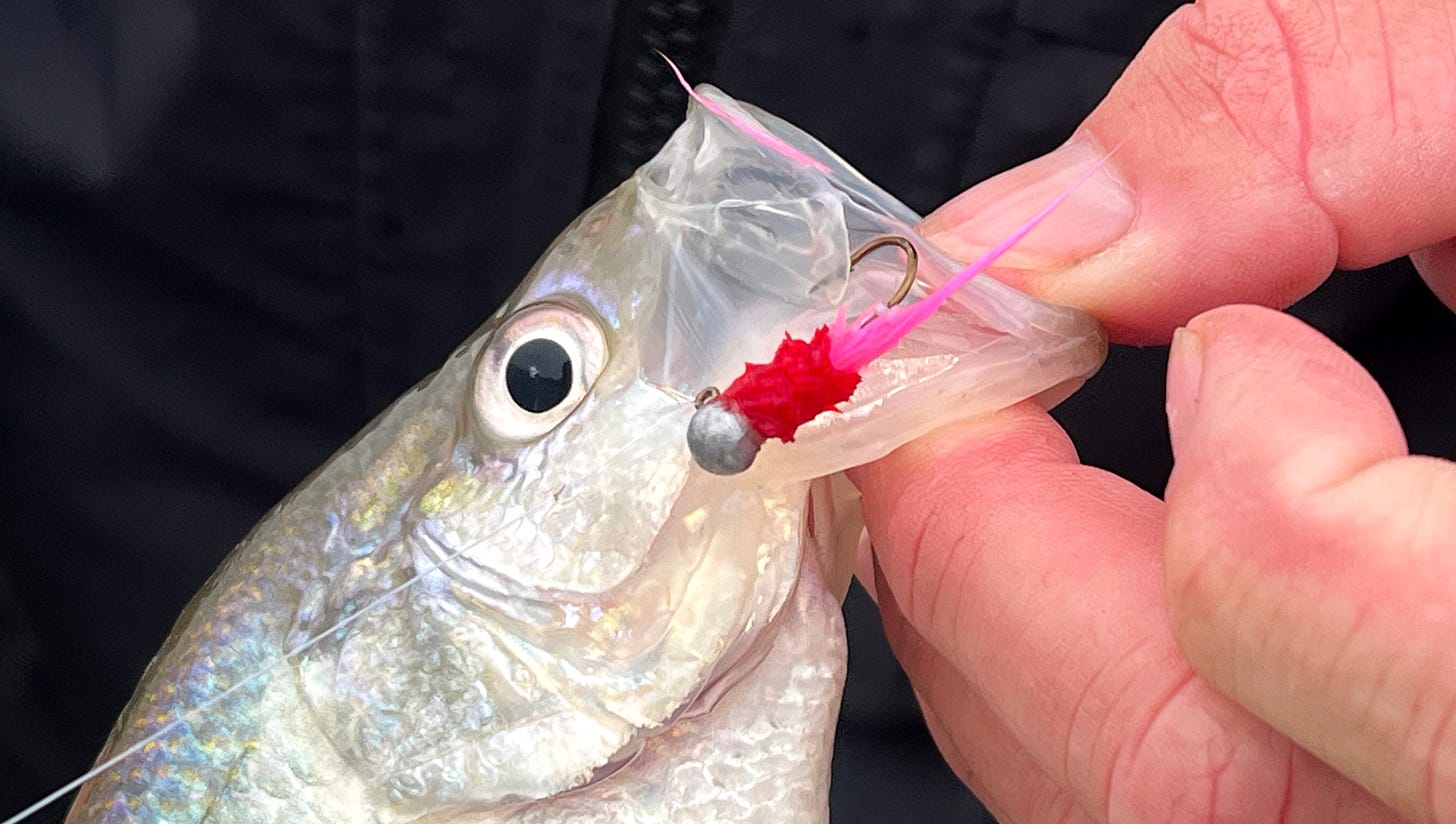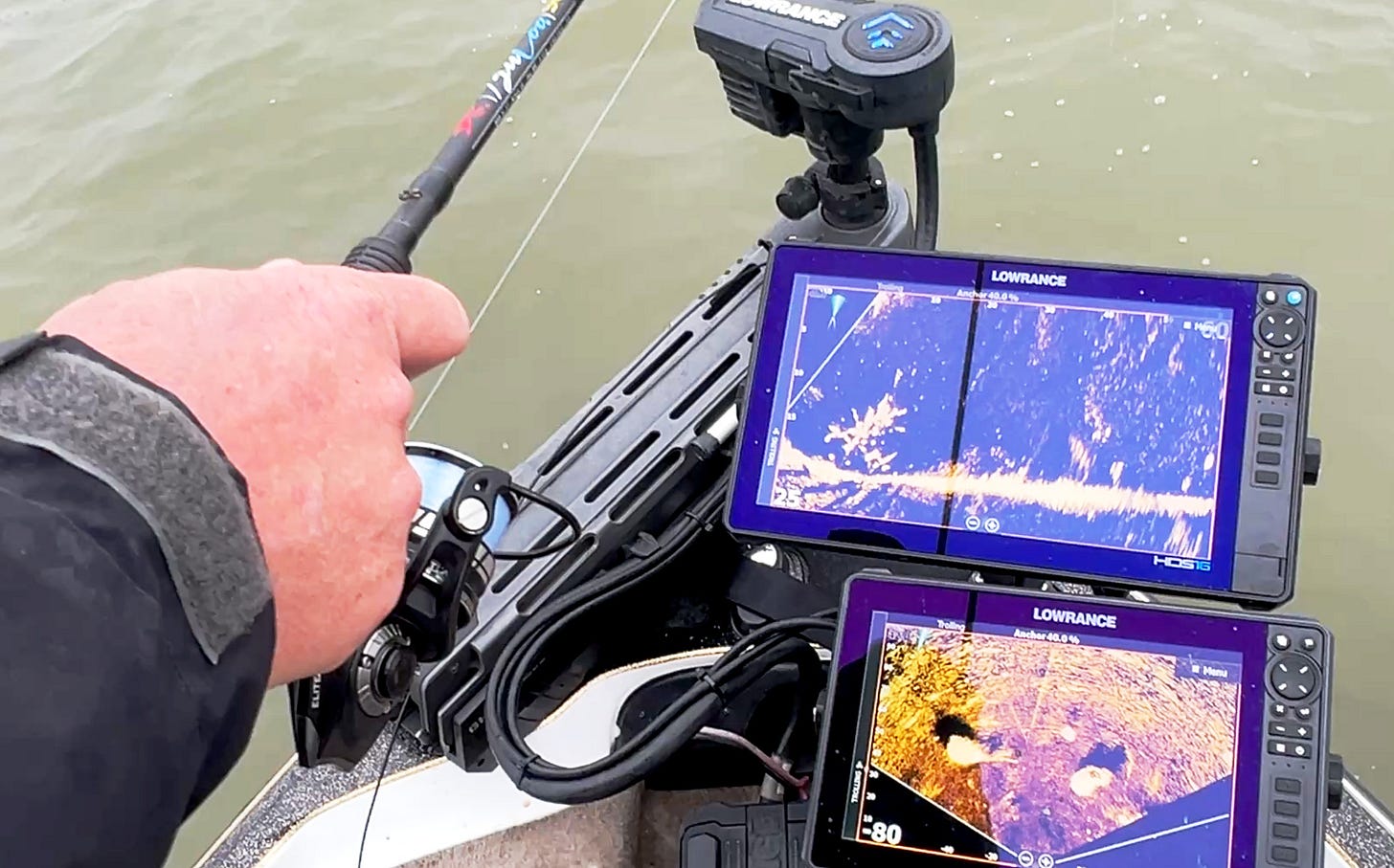Brady Coyle lives to swim with the fishes
Crappie angler/scuba diver shares his perspective at Crappie University Thursday

Imagine standing on the front of the boat with a guy looking at two spiffy Lowrance live sonar screens loaded with blips of crappie, shad, and brush, and have him tell you there is a better view to be had.
I don’t have to because I did just that last week with angler Brady Coyle.
If you sign up for Crappie University (you have one day left), you can hear him talk about it, too. The weather is shaping up to be crappy for crappie fishing, so this is a great time to head out and learn more about it.
The annual Crappie Univesity lectures run Thursday and Tuesday nights through Feb. 25 at Tulsa Tech-Owasso, 10800 N 137th Ave., in the Sycamore Room.
You can sign up anytime at crappieuniversity.com or pay at the door. The cost is $99. This week, it might be wise to check the Tulsa Tech website for weather closure notices (Tech posted that it is closed on Wednesday due to ice).
Organizer Gary Dollahon said if any classes are affected by weather delays, they will be rescheduled as soon as possible.
Weather permitting, Coyle kicks things off Thursday with a session titled “Open Your Eyes and Mind to Catch More Crappie” from 6:30 to 9 p.m.
The University continues on Feb. 18 with Jim Neal, Gary Rowe, and Gary Dollahon teaming up to “Unconfuse the Confused.” This is a good call. It will take at least three experienced hands to explain “the ins and outs of today’s fish-finding sonars, including forward-facing technology.”
Just kidding, folks. This one’s worth the full admission just to corner these three guys in a room and pick their brains on crappies in general.
Professional crappie angler and guide Todd Huckabee leads the third session on Feb. 25. His theme is “Crappie Highways,” which has nothing to do with our state’s crappy highways but everything to do with Huckabee’s in-depth knowledge about crappie movements through every season, with a focus on Oklahoma's lakes.

Swims with the fishes
If you’ll pardon the deathly but irresistible Godfather reference, I can assure you Coyle was alive as his Lowrance scopes last week—and then some.
Observe his focus on the sonar screens as he fishes, and you’ll sense that he has a little extra something working in the gray matter behind his peepers.
Indeed, he swears his scuba experience adds to the incredibly advanced Lowrance sonar views at the bow of his boat.
For him, the drive to dive came from his former father-in-law, George Toalson, and the common frustration faced by many a competitive bass angler.
“There was a time I was really big into bass fishing. I hit every jackpot, every tournament I could get into,” he said. “When you start out you go to these weigh-ins and see all these big strings and you weigh in a bunch of dinks.”
That kind of experience gets a guy thinking about why fish bite some days, not others, and why seeing loads of fish on the sonar doesn’t mean you’ll catch loads of big fish—or any fish.
Years later and with countless hours spent above and below the water as an angler and as part of the Oklahoma Highway Patrol Dive Team, he has an added perspective on lake structures as well as the fish, their positioning, what light penetration means for visibility, and details about their hideouts that just don’t show, no matter how sharp your sonar appears.
“I wanted to know why fish held in some places and not others, brush piles, stumps, rocks, and man-made structures,” he said. “The fish, they’re not scared of you when you’re down there in scuba gear. It’s pretty much like a petting zoo.”
Bigger fish might keep their distance, but all are curious, and the little ones can be annoying with their constant schooling and pecking at a large visitor.
“I could pick up a crawdad from under a rock and feed the fish,” he said. “That helped me understand crawdad colors on the lakes I fished. They change seasonally.”

Fishing and diving
Winter fishing last week was a slow-and-easy affair. Coyle found a creek channel about 15 feet under Oologah’s gray, chilly, misty chop littered with logs and other woody debris left behind by the flood of 2019.
A simple red-and-pink home-tied 1/8th-ounce jig did the job: red maribou body, pink deer-hair tail. In winter, the goal is to drop the jig into the busy zone—in this case, mostly 12 to 15 feet—and hold it nearly motionless.
On recent days, with better light, Coyle said a jig with red and chartreuse was the ticket. Your basic “electric chicken” jig.
Of course, standing in a boat in choppy water, with 10 to 15 mph wind gusts, makes that impossible. Any slight movement at the angler’s end of that 4-pound-test line threaded through a sensitive Falcon BuCoo SR rod transferred to that fluffy jig below, and the touch of a crappie’s paper mouth transmitted clearly in the other direction.
Fishing was not fast and furious, but the bites were aggressive, and a couple of hours put plenty on the way to the dinner table.
Coyle said he plans to show anglers the many resources they have to find productive crappie structures—he said Oologah has around 200 marked brush piles anyone can find—and to recruit a few into scuba.
“It’s $150 to get certified, and you’ll need an instructor. It’s about $60 to rent all the gear you need to go out and give it a try. I recommend it for anybody who is curious about what’s actually under the water,” he said.



